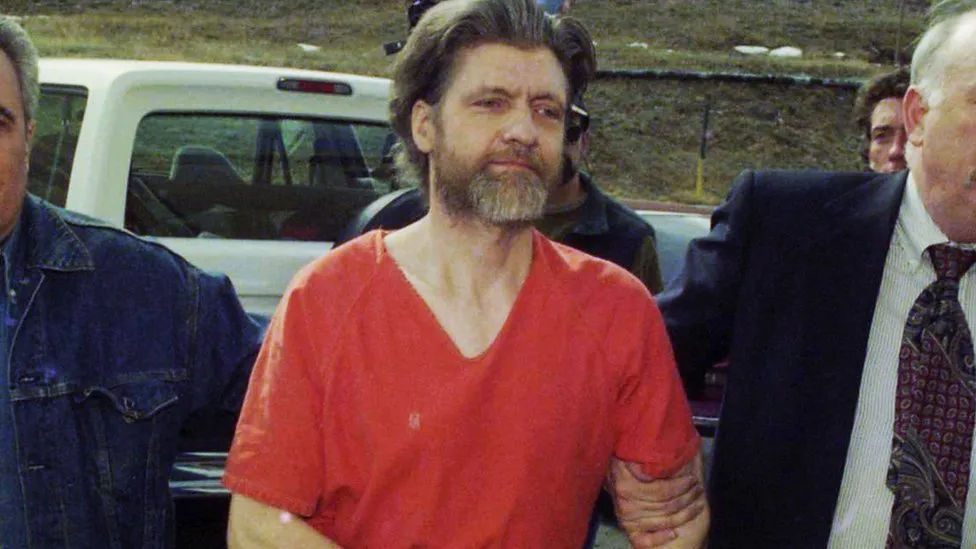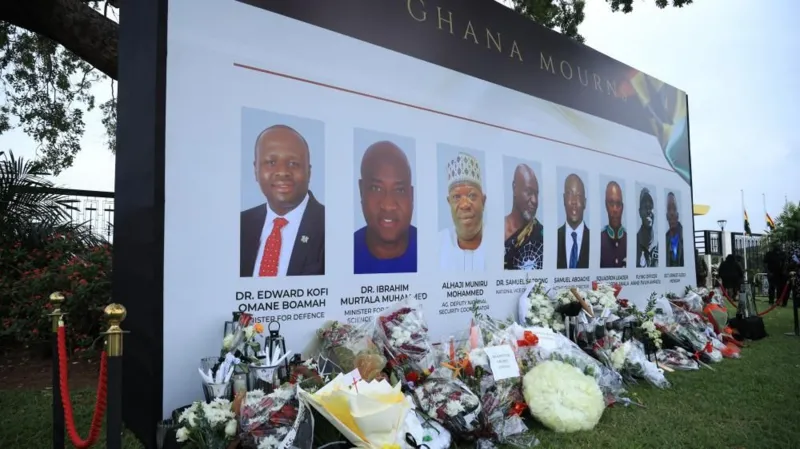Unabomber Ted Kaczynski found dead in US prison cell
Ted Kaczynski, better known as the Unabomber, has been found dead in his prison cell, federal officials confirmed to the BBC.

Kaczynski, 81, killed three people and injured 23 more during a mass mail-bombing spree between 1978 and 1995. He later pleaded guilty to his crimes.
He was sentenced to life without parole in 1996 after evading capture for almost 20 years.
The Harvard-trained mathematician was eventually caught in a Montana cabin.
He was a man who fascinated America for decades, and he became the focus of numerous TV documentaries.
Kaczynski spent the past three decades held at prisons across the US - most recently at the Federal Medical Center in Butner, North Carolina.
Prison guards at the facility discovered Kaczynski's body on Saturday morning at around 00:25 local time (04:25 GMT), a spokesperson for the US Bureau of Prisons told the BBC.
His cause of death was not immediately clear.
"Responding staff immediately initiated life-saving measures," the spokesperson said. Kaczynski was then "transported by EMS to a local hospital and subsequently pronounced deceased by hospital personnel".
Before suffering from declining health which prompted his transfer to the facility in December 2021, he had been held at the federal Supermax prison in Florence, Colorado, since May 1998.
Kaczynski's violent campaign - which shook the US - left a number of his victims permanently maimed and changed the way Americans posted letters.
His crimes were uncovered after he forced the Washington Post and the New York Times to publish his unhinged and angry manifesto, called Industrial Society and Its Future, in September 1995.
They agreed to print the manifesto on the recommendation of the FBI and the US attorney general after Kaczynski said he would end his campaign if a national paper published his treatise.
The 35,000-word anonymised document railed against modern life and claimed that technology was leading to Americans suffering from a sense of alienation and powerlessness.
But after reading the papers, Kaczynski's brother and sister-in-law recognised the tone and alerted the FBI, who had been searching for him for years in the nation's longest manhunt.
In April 1996 authorities finally caught up with him in a 10-by-14-foot (3-by-4-metre) plywood and tarpaper cabin outside Lincoln, Montana.
The hut was filled with journals, a coded diary, explosives and two completed bombs.
While Kaczynski's manifesto struck many as being overtly political in tone, he never sought to embody the revolutionary mantle some attributed to him.
In his own journals he wrote that he didn't claim to be "altruist or to be acting for the 'good' (whatever that is) of the human race", instead insisting that he acted "merely from a desire for revenge".
His crimes seemed to begin shortly after he was fired from the family business by his brother for posting abusive limericks to a female colleague who had dumped him after two dates.
From there he retreated to the Montana wildness and to the cabin he had built by hand, without heating, plumbing or electricity.
His first attacks targeted Northwestern University in Illinois. The two bombings occurred almost a year apart on 25 May 1978 and 9 May 1979, injuring two people.
Then, in November 1979, an altitude-triggered bomb he had mailed went off aboard an American Airlines flight. Twelve people suffered from smoke inhalation.
The early attacks earned him the moniker Unabomber from the FBI, as his targets seemed to be universities and airlines.
Over the following years he attacked a further 13 times, killing three people - computer rental store owner Hugh Scrutton, advertising executive Thomas Mosser and timber industry lobbyist Gilbert Murray.
At Kaczynski's trial, Mr Mosser's wife said her husband had been killed on the day he was supposed to be picking up a Christmas tree with his family and recalled the moments after the attack.
"He was moaning very softly," she said of her husband. "The fingers on his right hand were dangling. I held his left hand. I told him help was coming. I told him I loved him."
Since his capture there has been endless speculation about Kaczynski's motivations.
A test as a boy revealed he possessed an IQ of 167, and he had skipped two grades to attend Harvard University aged just 16.
FBI agents described him as "a twisted genius who aspires to be the perfect, anonymous killer" and he was diagnosed as a paranoid schizophrenic by a psychiatrist who interviewed him in prison.
In a 47-page report Sally Johnson wrote that the "central themes" of his manifesto "involve his belief that he is being maligned and harassed by family members and modern society".
But Kaczynski himself always insisted that he knew exactly what he was doing, and he tried to take his own life in prison after his legal team attempted to introduce an insanity plea.
In an interview with Time magazine in 1999 he said he didn't suffer from "delusions and and so on and so forth".
"I'm confident that I'm sane, personally," he said.
-bbc







